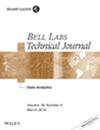Surface Water Quality Assessment Using Remote Sensing, Gis and Artificial Intelligence
Q1 Engineering
引用次数: 2
Abstract
The deterioration of surface water quality occurs due to the presence of various types of pollutants from human activities such as agriculture, industry, construction, deforestation, etc. Thus, the presence of various pollutants in water bodies can lead to deterioration of both surface water quality and aquatic life. Conventional surface water quality assessment methods are widely performed using laboratory analysis, which are labour intensive, costly, and time consuming. Moreover, these methods can only provide individual concentration of surface water quality parameters (SWQPs), measured at monitoring stations and shown in a discrete point format, which are difficult for decision-makers to understand without providing the overall patterns of surface water quality. To such problem, Remote Sensing has been a blessing because of its low cost, spatial continuity and temporal consistency. The relationship between SWQPs and satellite data is complex to be modelled accurately by using regression-based methods. Therefore, our study attempts to develop an artificial intelligence modelling method for mapping concentrations of both optical and non-optical SWQPs. This study aims to develop techniques for estimating the concentration of both optical and non-optical SWQPs from Satellite Imagery (Landsat8) which supports coastal studies and mapping the complex relationship between satellite multi-spectral signature and concentration of SWQPs. It will also focus on classifying the most significant SWQPs that contribute to both spatial and temporal surface water quality. In contrast to traditionally performed surface water quality assessment methods, this research project will be focused on identifying such parameters incorporating the new and evolving machine intelligence that is Artificial Intelligence (AI). Significant number of samples have to be collected along with the GPS data which is used to model the relationship. In this context, a remote-sensing framework based on the back-propagation neural network (BPNN) will be developed to quantify concentrations of different SWQPs from the Landsat8 satellite imagery. The study area chosen for this research is Bijayapur River of distance approximately 10 km flowing above, through and down the Pokhara city. The sole purpose of this research is to examine the water quality before it flows through the city and analysing after it passes through the city.基于遥感、地理信息系统和人工智能的地表水质量评价
地表水质量的恶化是由于人类活动(如农业、工业、建筑、森林砍伐等)产生的各种污染物的存在而发生的。因此,水体中各种污染物的存在会导致地表水质量和水生生物的恶化。传统的地表水水质评价方法普遍采用实验室分析,劳动强度大,成本高,耗时长。此外,这些方法只能提供在监测站测量并以离散点格式显示的地表水质量参数(SWQPs)的单个浓度,如果不提供地表水质量的整体模式,决策者很难理解。对于这类问题,遥感以其低成本、空间连续性和时间一致性而成为一种福音。SWQPs与卫星数据之间的关系非常复杂,难以通过基于回归的方法精确建模。因此,我们的研究试图开发一种人工智能建模方法来绘制光学和非光学SWQPs的浓度。本研究旨在开发从卫星图像(Landsat8)中估计光学和非光学SWQPs浓度的技术,以支持沿海研究,并绘制卫星多光谱特征与SWQPs浓度之间的复杂关系。它还将重点对影响空间和时间地表水质量的最重要的SWQPs进行分类。与传统的地表水质量评估方法相比,该研究项目将专注于识别这些参数,并结合新的和不断发展的机器智能,即人工智能(AI)。必须收集大量的样本以及用于建立关系模型的GPS数据。在此背景下,将开发基于反向传播神经网络(BPNN)的遥感框架,以量化来自Landsat8卫星图像的不同SWQPs的浓度。本研究选择的研究区域是比杰雅普尔河,距离约10公里,流经博卡拉市。本研究的唯一目的是在水流经城市之前对其水质进行检查,并在其流经城市之后进行分析。
本文章由计算机程序翻译,如有差异,请以英文原文为准。
求助全文
约1分钟内获得全文
求助全文
来源期刊

Bell Labs Technical Journal
工程技术-电信学
自引率
0.00%
发文量
0
审稿时长
6-12 weeks
期刊介绍:
The Bell Labs Technical Journal (BLTJ) highlights key research and development activities across Alcatel-Lucent — within Bell Labs, within the company’s CTO organizations, and in cross-functional projects and initiatives. It publishes papers and letters by Alcatel-Lucent researchers, scientists, and engineers and co-authors affiliated with universities, government and corporate research labs, and customer companies. Its aim is to promote progress in communications fields worldwide; Bell Labs innovations enable Alcatel-Lucent to deliver leading products, solutions, and services that meet customers’ mission critical needs.
 求助内容:
求助内容: 应助结果提醒方式:
应助结果提醒方式:


